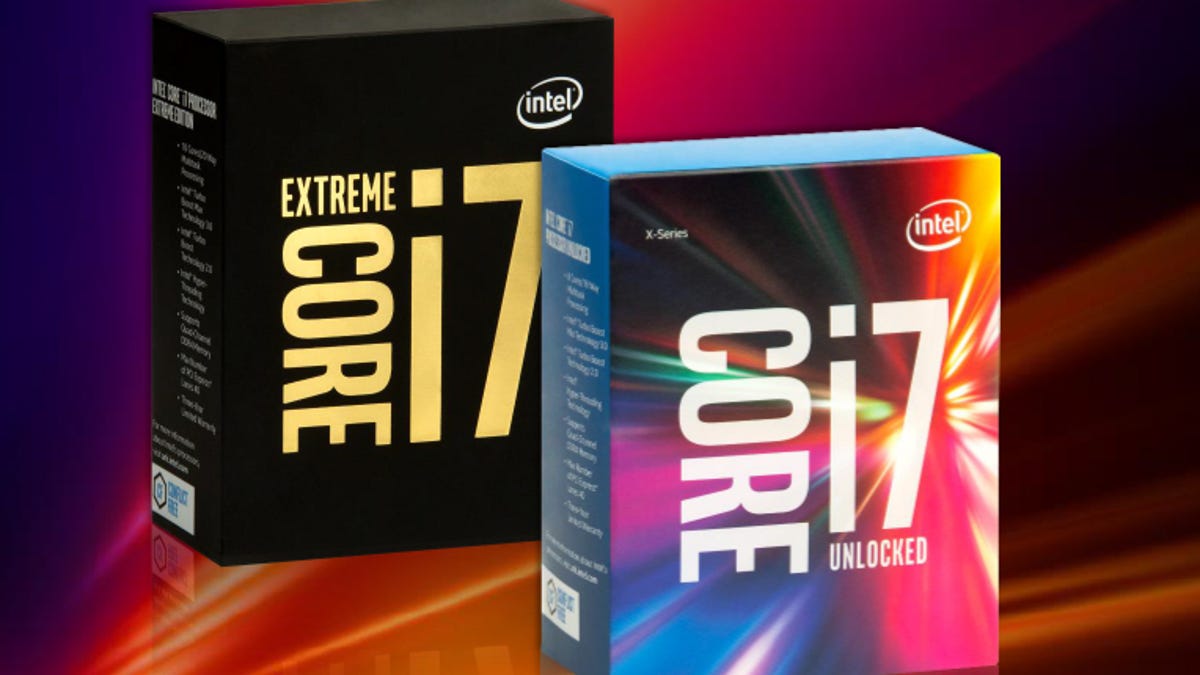Intel goes 'extreme' with first 10-core processor, puts tick-tock tactics on hold
Multitasking is for the weak: Now Intel is targeting "mega-taskers" at Taipei's Computex show, launching a lineup of desktop processors with "crazy good" performance.

The next generation Broadwell-E chip is getting a makeover.
Dual-core. Quad-core. Octa-core.
Chipset manufacturers have been boosting processing power by leaps and bounds in recent years. Now, Intel is going one better with the next-generation Broadwell-E chip family, its first ever 10-core desktop processor.
You heard that right: Intel is going for "10-core" in its branding here, ditching the logical naming progression to "deca-core." Apparently, we don't need Latin with speeds like this chip promises.
The company is targeting power users with its next "Extreme Edition" of Core i7 chips, saying they've been designed with gamers, VR fans, content creators and overclockers in mind. Intel calls these users "mega-taskers." Apparently if you're still just multitasking then you're doing it wrong.
While Intel is talking the "extreme" talk, the company is more focused on iteration than revolution after announcing last year that it would be ditching its "Tick-Tock" product cycle in favor of a "Process, Architecture, Optimization" model.
Intel has traditionally alternated between announcing a shrinking of its chips in one year (tick), followed by the release of updated chips that use a new microarchitecture in the same footprint (tock).
With Intel's "tick-tock" approach, it moves to a new chip manufacturing technology every two years. On the years in between, Intel updates the chip architecture but leaves the manufacturing process unchanged.
This year, Intel has stuck with the same 14-nanometer die used in previous generations, but added enhancements to boost speeds and performance.
In Broadwell-E, announced this week at Computex in Taipei, we're seeing 10 cores in the top-of-the-line chip, with two threads per core. That means faster speeds and, says Frank Soqui, GM of Intel's Enthusiast Desktop Group, "crazy good" performance.
To make sure it isn't just about lots of cores, Intel also features "Turbo Boost Max" technology that tests the individual chip to identify which cores are physically fastest because slight variations in manufacturing can give some cores better results than others. This technology means tasks that need the fastest single-core operation possible can be allocated to the best cores on the chip.
You'll find all those cores in Intel's top Extreme Edition chip, the i7-6950X:
- 10 cores, 20 threads
- 8-core and 6-core options also available
- Turbo Boost Max Technology 3.0
- 4-channel memory support
- 25MB smart cache
- Fully unlocked (offering flexibility for overclockers)
Intel's die map shows the 10 cores in its latest processor.
For those not playing buzzword bingo, these features essentially work together to make a chip that can handle the bigger workloads demanded by applications, such as 4K gaming and VR content creation.
And here's where mega-tasking comes in and where Intel says heavy users will find the most benefits.
"Multitasking is basically the ability to switch between unrelated applications," said Soqui. "You might be doing a PowerPoint and then switch to the web or run a movie, but none of those things are actually related to each other. When we talk about mega-tasking we're talking about simultaneous, compute-intensive, multithreaded workloads that are aligned in a purpose."
So if you're editing 4K or 360-degree video, rendering 3D graphics, importing high-res images from your camera and uploading them to the cloud, you'll be able to do all of these things more quickly, without task switching.
As an example (based on its own benchmark tests), Intel says 4K video editing and 360-degree video creation is 25 percent faster than with the previous generation chips. PC gamers will also be able to play in 4K, live-stream on Twitch in 1080p, capture gameplay footage and then transcode it and upload it to YouTube about 25 percent faster on Broadwell-E (compared to the previous generation Haswell-E).
Check out the rest of CNET's Computex 2016 coverage here.

